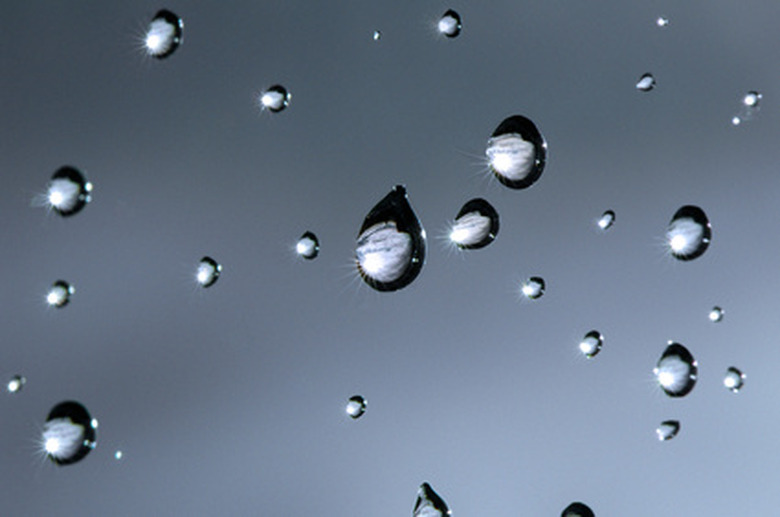Mineral Composition Of Rain Water
Rainwater generally contains few minerals. This low mineral content makes rainwater ideal for collection and reuse in gardening, according to "Rainwater Harvesting Policies," a 2008 U.S. Environmental Protection Agency handbook, and the Rain Barrel Guide website. As rainwater falls and soaks into aquifers it can collect more minerals from the ground and later pipes as it comes through your household taps.
Mineral Types
Mineral Types
What trace minerals pure rainwater contains, it picks up from the environment through evaporation and transpiration. According to a 2008 EPA study that looked at rainwater composition in North Carolina during a hurricane, minerals such as nitrate, mercury, chloride and sulfate were present. The latter two correspond with sea salt.
Geographic Considerations
Geographic Considerations
Mineral compositions can strongly vary by location — ocean and coastal areas receive rainwater high in salt, for example — as well as climate.
Conclusion
Conclusion
There is no one simple answer for which minerals can be found in rainwater, beyond the fact that the amounts are small enough for most sources to consider it soft water.
References
- Rain Barrel Guide: Why Harvest Rainwater with Rain Barrels?
- U.S. EPA: Rainwater Harvesting Policies
- U.S. EPA: Health & Environmental Research Online "Changes in rainwater composition in Wilmington, NC during tropical storm Ernesto"; C. Miller, J.D. Willey, R.J. Kieber; 2008
- Ask an Earth Scientist: What is a Chemical Salt Recipe for Typical Rainwater?
Cite This Article
MLA
Stojnic, Niki. "Mineral Composition Of Rain Water" sciencing.com, https://www.sciencing.com/mineral-composition-of-rain-water-12389110/. 4 October 2010.
APA
Stojnic, Niki. (2010, October 4). Mineral Composition Of Rain Water. sciencing.com. Retrieved from https://www.sciencing.com/mineral-composition-of-rain-water-12389110/
Chicago
Stojnic, Niki. Mineral Composition Of Rain Water last modified August 30, 2022. https://www.sciencing.com/mineral-composition-of-rain-water-12389110/
